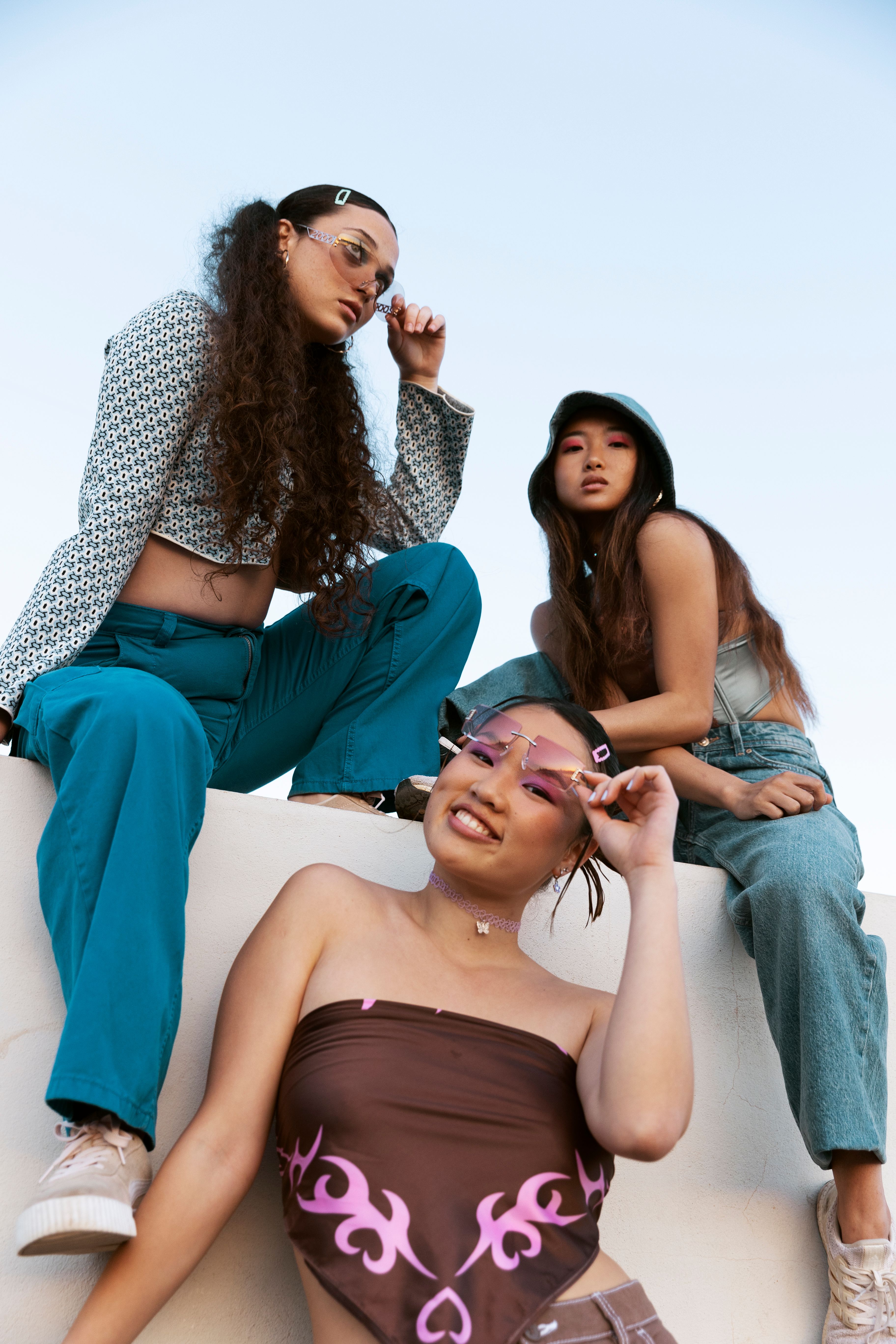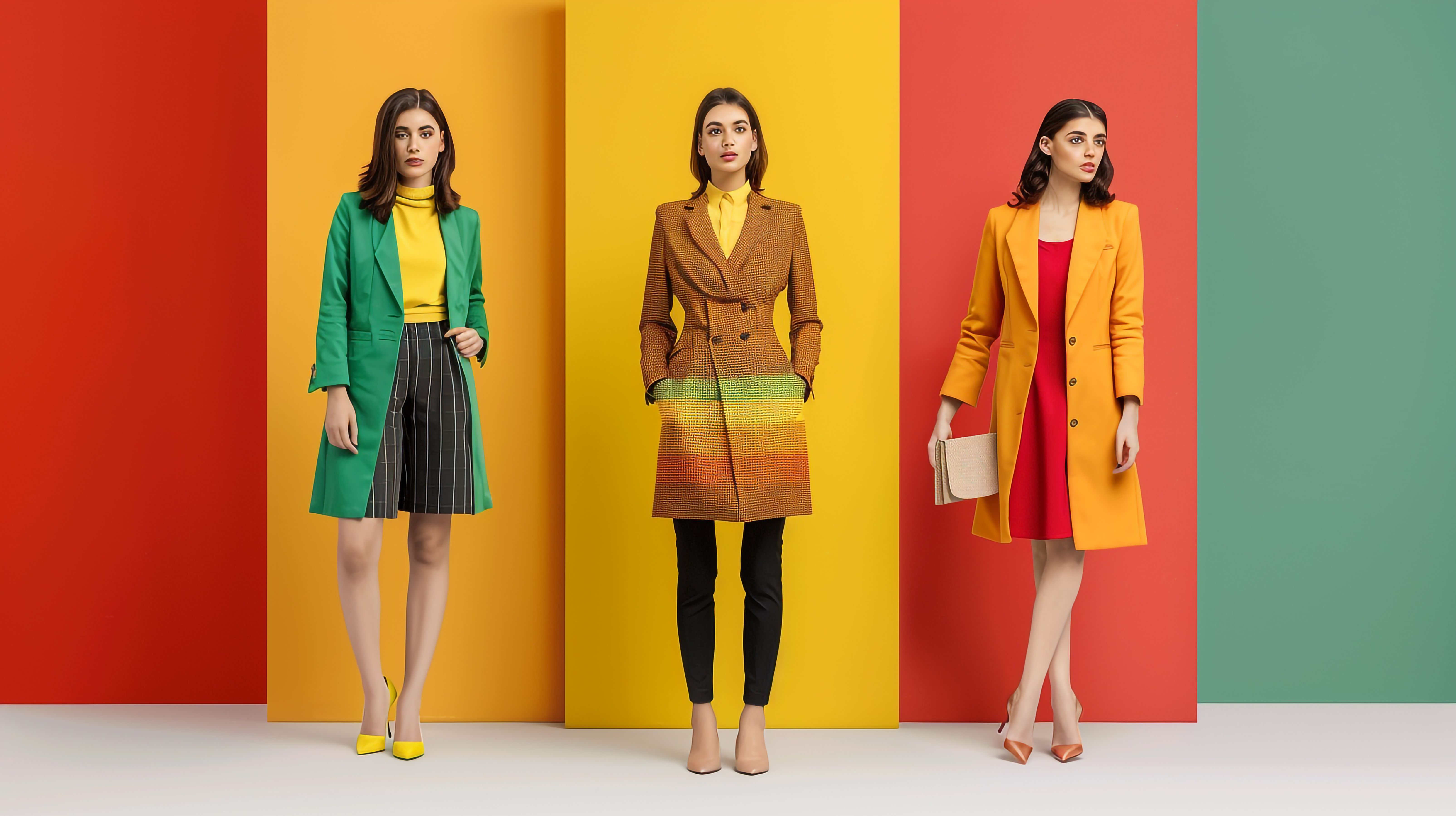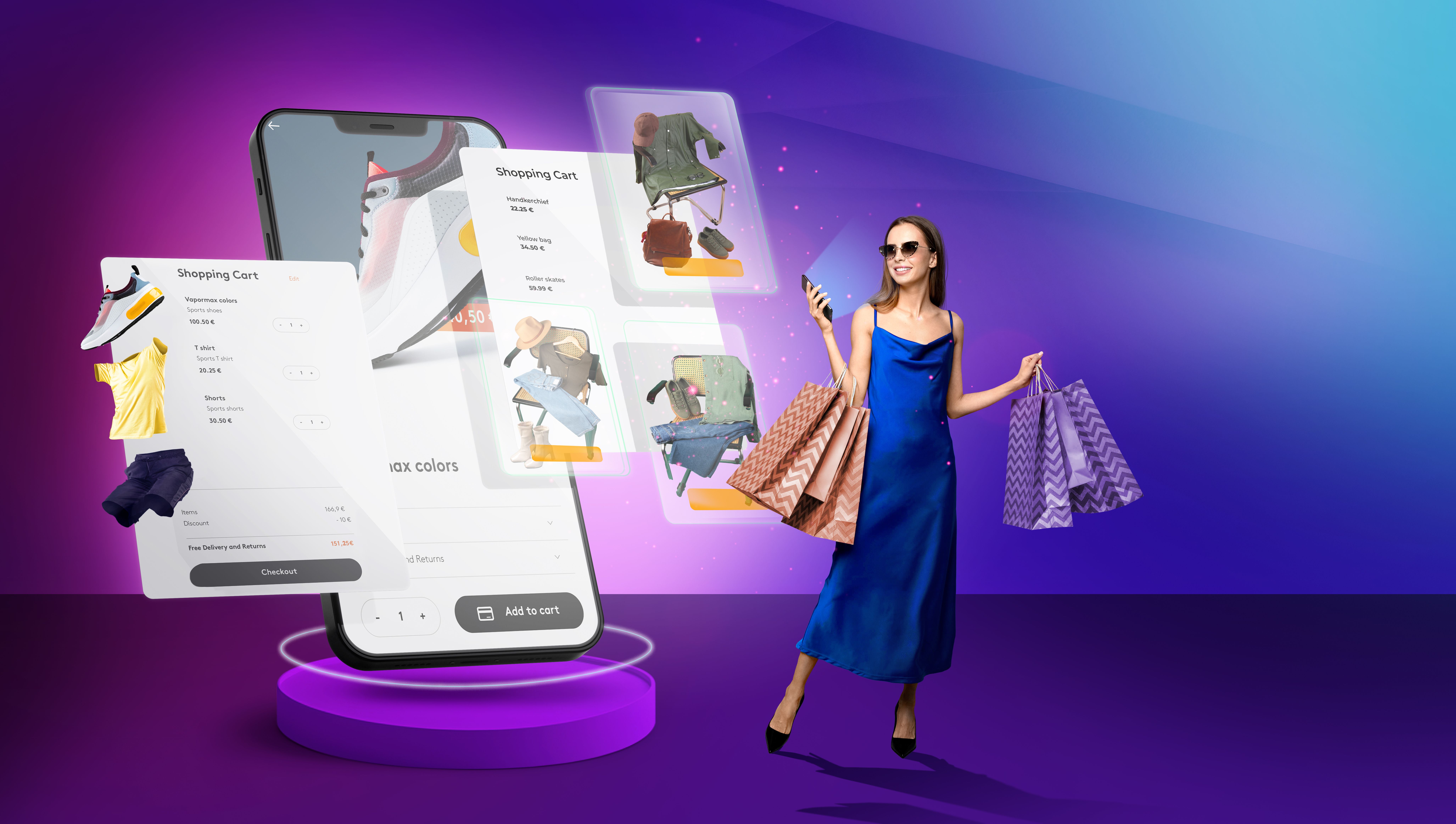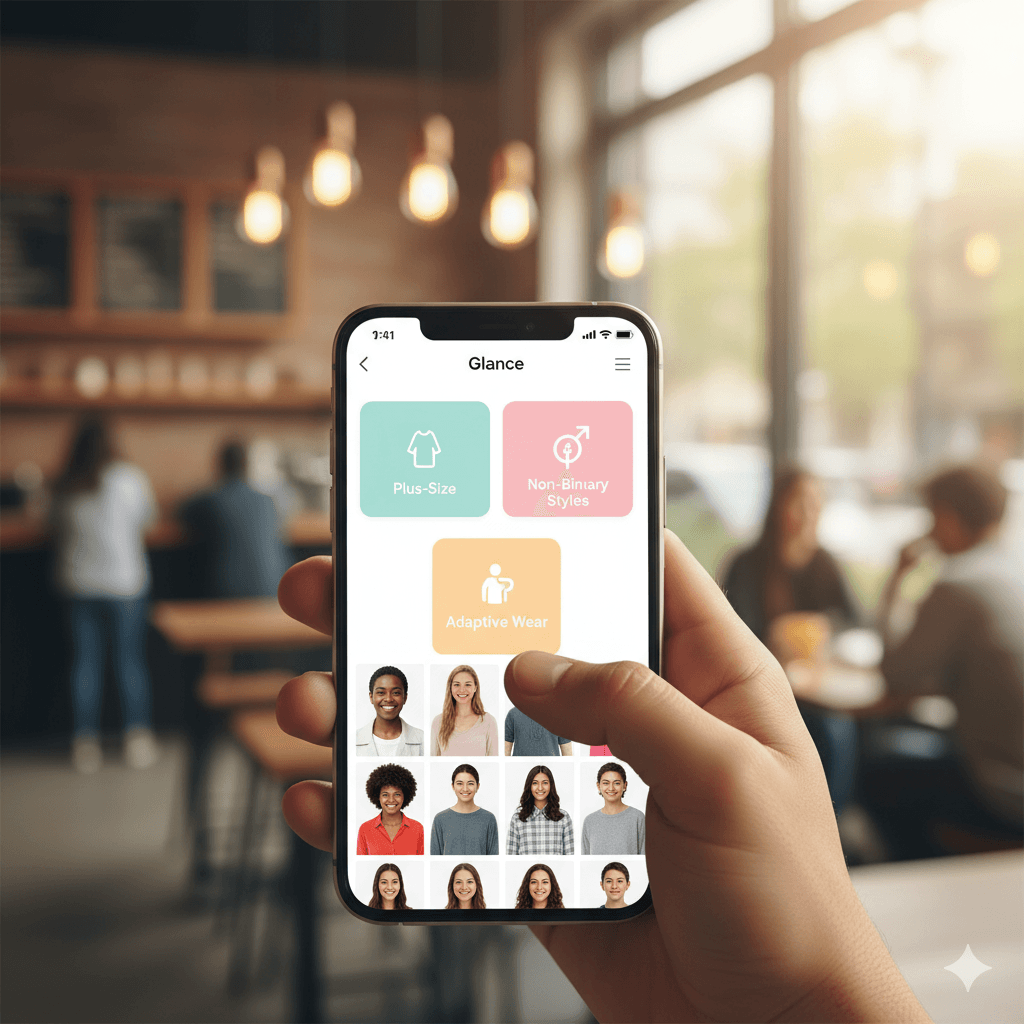How Fashion Inspiration Evolves Through Social Media
Smart Closet & Outfit Planner: Seamless Style Tech


TL;DR
- A smart closet paired with an outfit planner turns wardrobe chaos into curated ease, reducing decision fatigue and making daily style seamless.
- By digitising inventory and using intelligent style engines (apps like Glance), users can plan professional outfits and special-event looks with confidence.
- As the outfit planning cluster evolves, this tech becomes central to smart style—saving time, effort and mental energy.
Why Smart Closet Tech Matters in Outfit Planning
The term smart closet refers to a wardrobe system enhanced by technology, inventory tagging, style analytics, integration with mobile apps. When linked to an outfit planner, users gain the ability to plan looks ahead, sync events, and receive tailored suggestions.
According to a market report, “the smart wardrobe market size was valued at USD 2.98 billion in 2023 and is projected to reach USD 8.2 billion by 2031, growing at a CAGR of 27.4%.” This growth reflects the leap toward digital wardrobe systems.
In practical terms, using a smart closet with an outfit organizer means fewer hours spent rummaging, less guesswork, and smarter use of what you already own. For busy professionals—for whom professional outfits matter—it means having on-demand suggestions for meetings, presentations, or formal events.
Decision Fatigue in Fashion Planning & How an Outfit Planner Helps

Decision fatigue describes the decline in decision-making quality as one makes more choices. One article explains how the mental load of picking clothes “ripples outward” to reduce focus and increase anxiety.
For example, one piece notes that the average woman spends 17 minutes deciding what to wear each day, more than 100 hours a year.
An outfit planner connected to a smart closet helps by:
- Pre-selecting looks ahead of time (especially useful if you use a wedding outfit planner app or special-event mode).
- Sorting by context—work, weekend, formal, casual—so you don’t face the full wardrobe every time.
- Suggesting combinations based on what you already own, reducing impulse buying and wasted outfits.
When the Virtual Closet tracks your wardrobe and the outfit planner suggests context-aware matches, you remove the morning stress, and the style game becomes automated, not agonised.
Key Features of a Smart Closet + Outfit Planner Ecosystem

Here are five core features that make the difference:
- Automated Inventory & Tagging
Your wardrobe's contents—shirts, jackets, shoes—get digitised. A smart closet logs metadata: colour, fabric, brand, last worn. An outfit planner uses this inventory to suggest looks. - Style Matching & Context-Aware Suggestions
The outfit planner analyses your calendar, weather data, past usage patterns and suggests outfits accordingly. Integrating tech like Glance lets you visualise looks and swap items real-time. - Event & Calendar Sync
Whether it’s a board meeting, date-night or wedding, the system flags context. For professional outfits, you get suggestions like tailored blazers + chinos. For casual looks, it might pull from lesser-worn items. - Analytics & Utilisation Insights
Smart Wardrobe tech tells you items you’ve never worn or combinations you repeat. The outfit planner nudges you to reuse items or refresh your style, which promotes sustainability. - Integration with Smart Devices & Style Apps
Linking your Digital Wardrobe to style apps (for example, the Glance platform) means you can receive outfit notifications on your phone, get style inspiration from AI-driven feeds, and even shop for missing pieces directly.
Together, these features make the outfit planner more than an app—it becomes your personal style assistant, and the smart closet becomes the engine driving it.
Implementation Best Practices for Using a Smart Closet + Outfit Planner
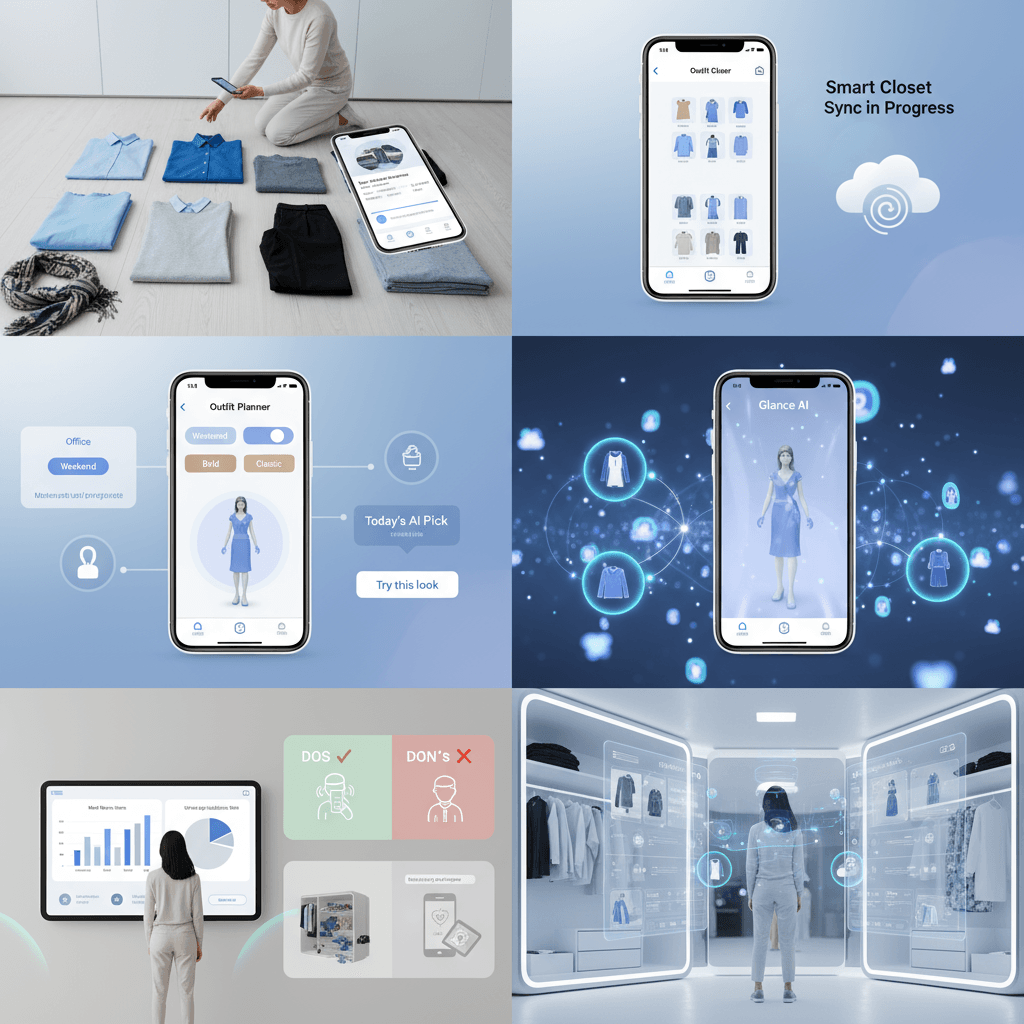
Step-by-step:
- Audit your current wardrobe: Pull everything out, photograph, tag items, note wear frequency.
- Sync to your Smart Wardrobe system: Upload photos + metadata. Ensure the system recognises colours, fabrics, brands.
- Select your outfit planner settings: Define event types (office, weekend, special), set style preferences (minimal, bold, classic).
- Link your smart closet + planner with style apps: Use platforms like Glance to feed real-time style inspiration into your outfit advisor.
- Review and refine: Weekly or monthly, check analytics—what you’re wearing vs what’s unused. Adjust suggestions and purge unnecessary items.
Dos & Don’ts:
- Do maintain updated inventory (new purchase, discarded item)
- Do train your outfit planner preferences (colours you love/avoid)
- Don’t treat the Digital Closet like a static photo gallery—update it often
- Don’t rely solely on the app—your style input still matters
The smarter your system and the more consistent your habit, the more your smart closet + outfit planner will become second nature.
Future of Outfit Planning with Smart Closet Tech
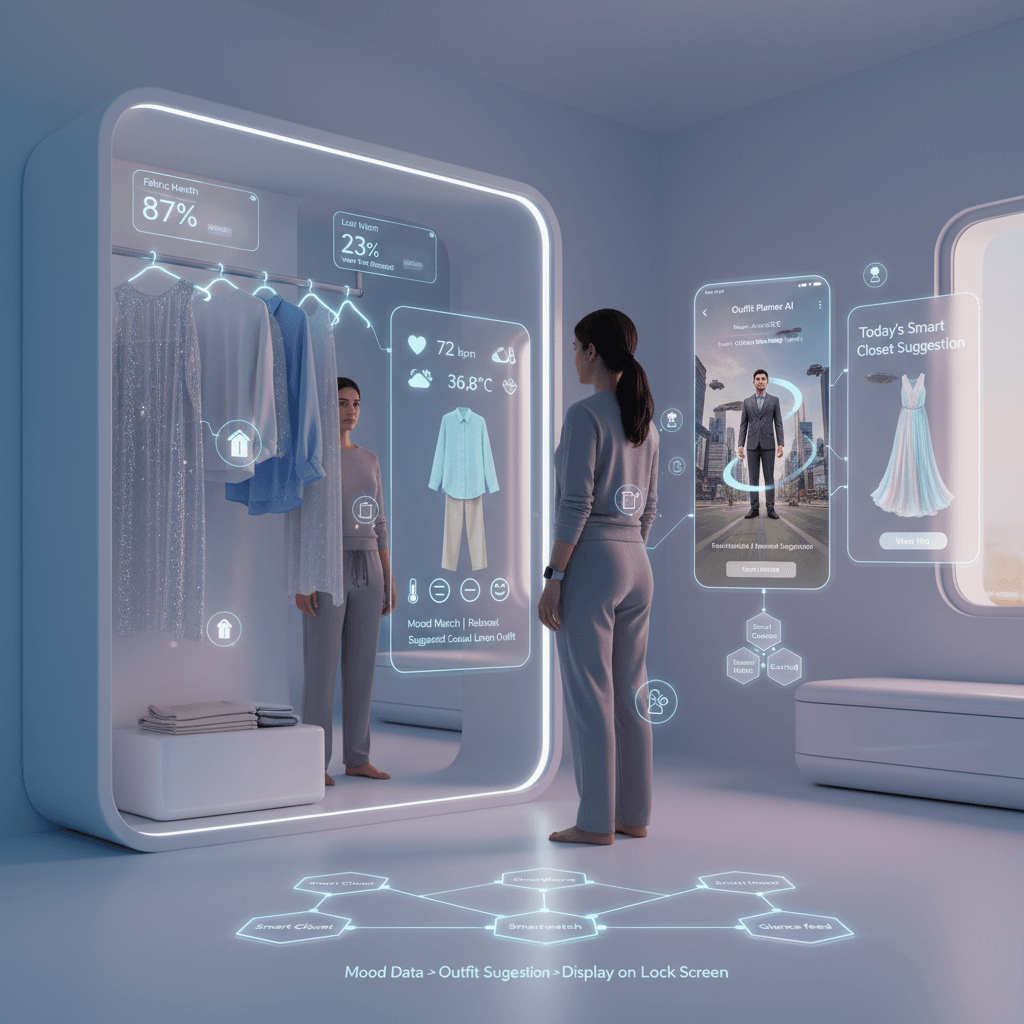
Looking ahead, as the Outfit Planning cluster matures:
- Smart Wardrobe will incorporate AI sensors to detect wear patterns, fabric health and recommend replacements.
- Outfit planners will leverage mood, location and even biometric signals (via devices) to suggest the right outfit at the right moment.
- Platforms like Glance will offer in-feed wardrobe suggestions, seamlessly linking your smart closet and outfit planner into your smartphone lock screen for instant glance-style inspiration.
From a market perspective, the virtual closet app market is forecast to grow significantly (though figures vary): one estimate states a market size of USD 132 million in 2024, forecasted to reach USD 260 million by 2031.
For users, this means that choosing what to wear will be less about scrolling your full wardrobe and more about tapping into a helper that knows your taste, your calendar, your mood.
Conclusion
Switching your wardrobe management from intuitive guesswork to intelligent systems means less stress and better style. Using a smart closet alongside an outfit planner, you free yourself from endless outfit decisions, gain confidence in your professional outfits, and open up space for style that fits your life—not just your closet. With integrations like those from Glance, your wardrobe becomes digital, dynamic and deeply personal. Now’s the time to audit your wardrobe, pick your planner, and make the smart closet transition — because style should be simple, not stressful.
FAQs
Q1: What exactly is a smart closet?
A smart closet refers to a digitally enabled wardrobe system that captures your clothing items (photos, metadata, wear frequency) and connects with apps or platforms. It becomes the inventory foundation for an outfit planner.
Q2: How does an outfit planner reduce decision fatigue?
An outfit planner uses your wardrobe data, calendar events and style preferences to suggest what to wear—cutting back the number of daily choices the brain has to make. Decision fatigue occurs when too many choices drain mental energy.
Q3: Will a Digital Wardrobe work for professional outfits or special events (like weddings)?
Yes — you can tag items by context and set filters for professional outfits or use a wedding outfit planner app module. The planner then suggests combinations suitable for those occasions.
Q4: Do I need an app like Glance with my smart closet?
While not mandatory, integrating your Smart Wardrobe with a style app such as Glance enhances the experience: real-time recommendations, inspiration feeds, and seamless mobile access.
Q5: Is investing in a smart closet and fit planner worthwhile?
If you struggle regularly with “what to wear”, spend time sorting your wardrobe or have many events, then yes. The system pays back in time saved, fewer impulse buys and better use of what you own.


